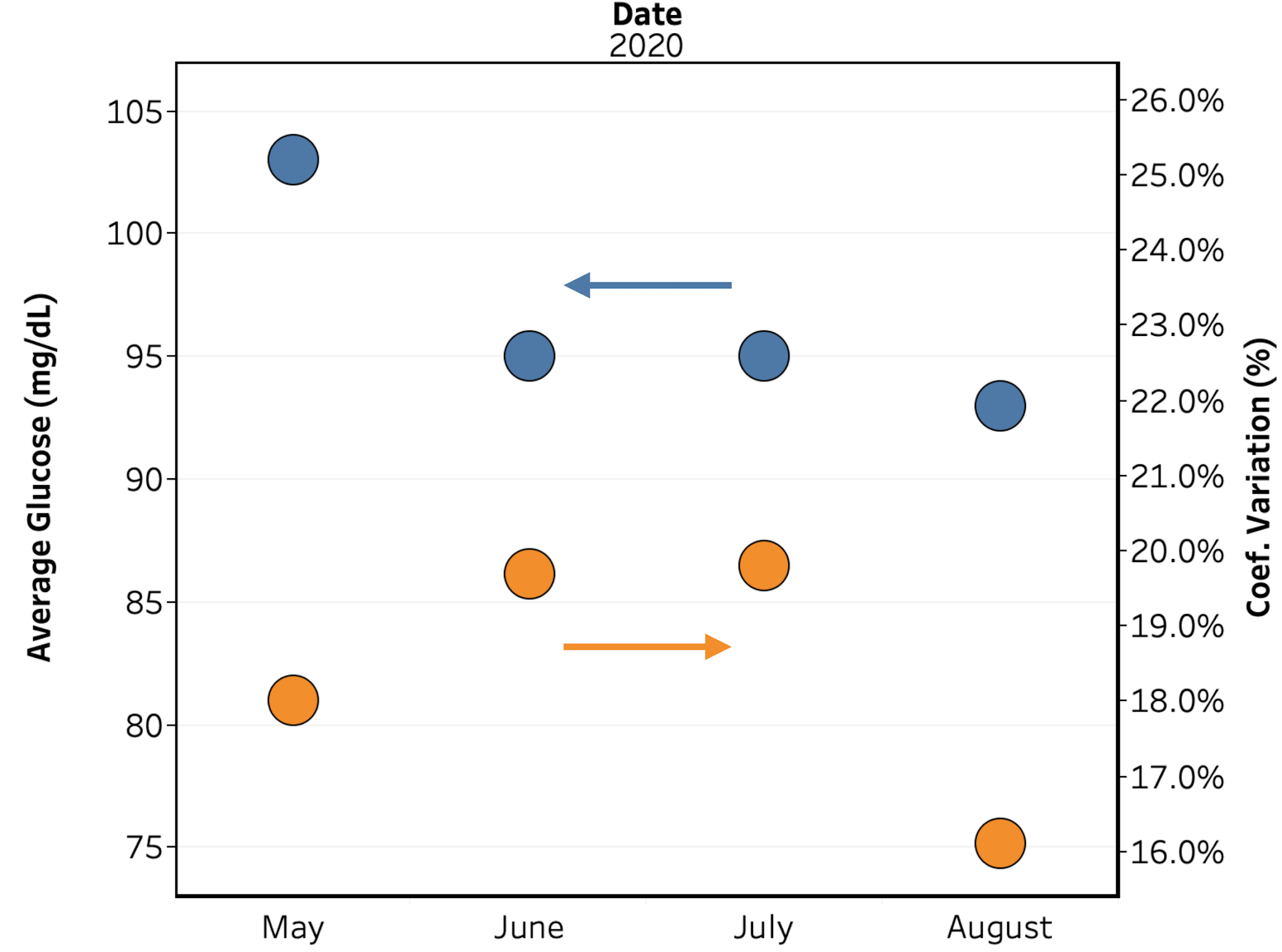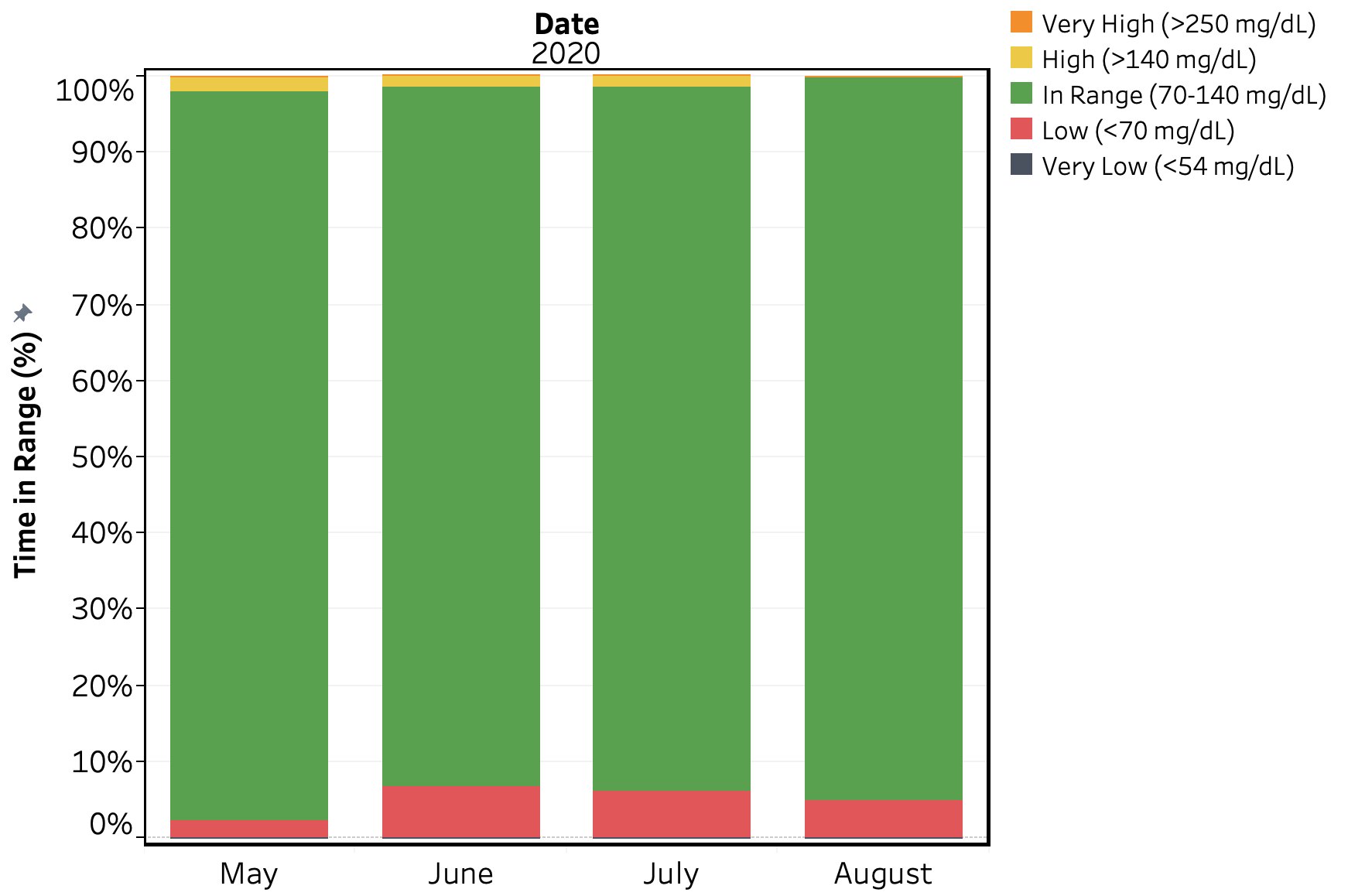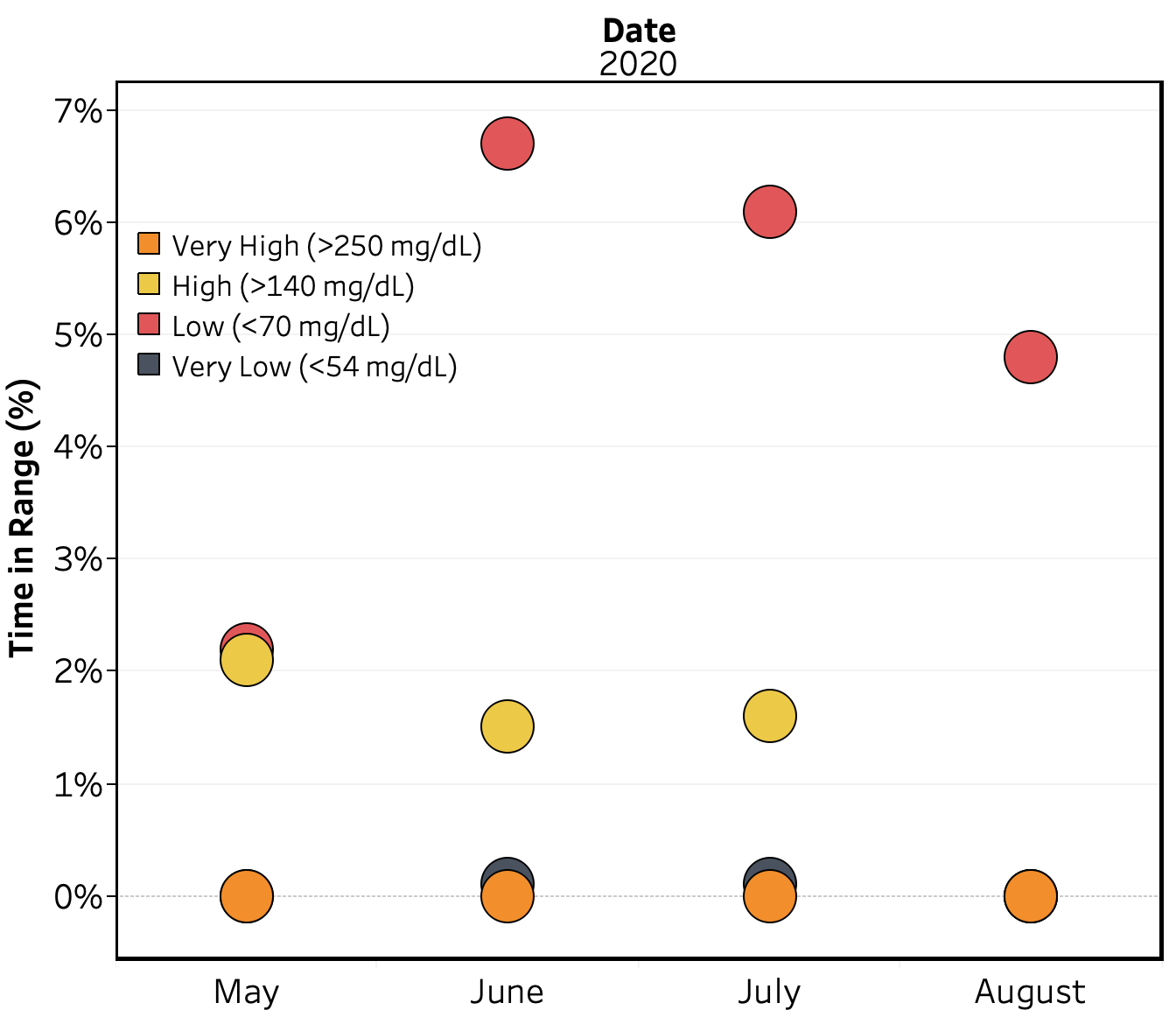Get new posts by email or rss feed
As I mentioned in the previous post, my next set of experiments will be re-tuning my basal (background) and bolus (meal) insulin doses. Before I started that, I’d like to take a look at how my blood sugar has been over the last few months and lay out the plan for how I will adjust my insulin dosages.
Now that I’m using a Dexcom CGM, it’s much easier to monitor my blood sugar. From my own tests, after calibration my Dexcom matches my BGM (Freestyle Lite) within ~5 mg/dL, which is within the error of the meter, so I will just use the data from the Dexcom.
Dexcom provides a service, Clarity, that autogenerates reports based on your data. There’s a ton of options, but for my purposes, I’ll be looking at average blood glucose, coefficient of variation, and time in range.
Here’s the data broken out by month:
Overall, my blood sugar is pretty good, but my time low is higher than I’d like. My suspicion is that this is due to my basal insulin being too high, resulting in me often going low between meals. Hopefully re-tuning my insulin doses will fix that.
To tune my insulin, I’m going to follow the approach described by Dr. Richard Bernstein in his book, Diabetes Solution, modified to use the vastly increased data from my CGM. I’ve used this in the past and it worked well for me. The basic procedure will be as follows:
- Target an average blood sugar of 85 mg/dL.
- Use my current insulin doses as baseline (Bernstein provides guidelines for how to estimate initial doses from scratch, but there’s no need for me to do that).
- Adjust wait times between insulin injection and meals so that BG decreases by 5 mg/dL (to match timing of BG effect of insulin and food)
- Adjust bolus insulin amount & type to minimize BG increase from the meal without causing an overall decrease in BG.
- Adjust basal insulin amount to minimize BG change overnight and between meals
When I did this before, I was using a finger-stick meter and needed worth of data to make fine adjustments. I’m hoping that with the increased data quantity from the CGM, the process will go much faster. Finger’s crossed.
-QD


